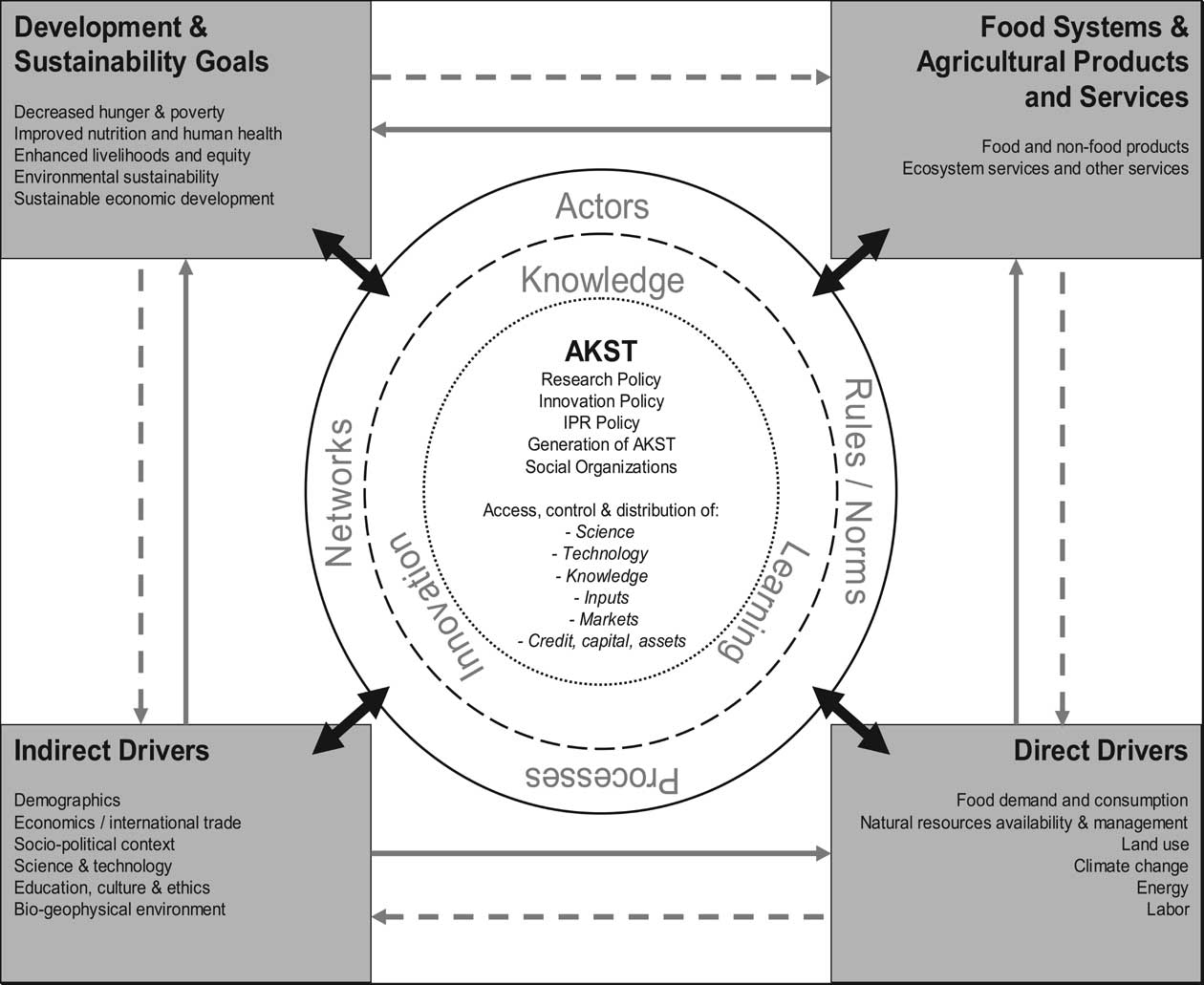
| Previous | Return to table of contents | Search Reports | Next |
| « Back to weltagrarbericht.de | ||
258 | IAASTD Global Report

Figure 4-1. The conceptual framework of IAASTD.
changes in rates of investments in research and development and the rates of adoption of new technologies, including biotechnologies and information technologies (4.3.4); In addition, a number of direct drivers relevant to agricultural systems are discussed in this chapter and outlooks on how they might unfold over the coming decades presented, again based on published literature—the main direct drivers presented in this chapter are: |
|
5. Energy, i.e., the relationship between energy and agriculture and the impact of large-scale bioenergy production (4.4.5); Looking across the expected developments of the different individual driving forces presented in this chapter gives a first idea of how agricultural systems and their role in providing agricultural products and services might unfold over the coming decades (4.5). The future role of and options for AKST in agricultural development are explored in detail in the remainder of this report. To inform this discussion, this chapter concludes by highlighting some of the key uncertainties for future agricultural changes as well as for AKST as identified in current literature and recent international assessments (Figure 4-2). 4.2 Recent International Assessments Recent international assessments provide a wealth of information about expected or plausible future developments— either by directly providing an outlook on expected developments in agriculture or by discussing possible developments of key driving forces and pressures that shape the future of agricultural systems. None of the existing global assessments, however, has addressed the role of and future |
| Previous | Return to table of contents | Search Reports | Next |
| « Back to weltagrarbericht.de | ||